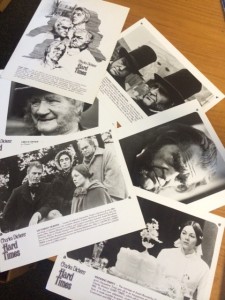The Federation of State Humanities Councils was officially formed in 1977 to work as a liaison between each state humanities council and the National Endowment for the Humanities. Over time the Federation has been extremely busy, creating for themselves a full and interesting history. Luckily for me, they documented all of it. Well, sort of. What they did was keep everything that has come their way over the past 37 years. My job is to sort, record, and sometimes annotate documents of importance that give insight into the nuances of the Federation’s history. The task seemed daunting initially but there was little else to do but just dive in head first. My first day reminded me of an old show I watched as a child, The Magic School Bus. I felt like I was in Ms Frizzle’s class, and on a field trip that took me back to the late 1970s. I’ve been reading and organizing letters from people all over the country, reading, what were then, important announcements and then reading the reactions of the people those announcements affected.
What I find most interesting, however, are the past projects different state councils have presented. State councils are partly funded by the National Endowment for the Humanities, therefore many proposals and advertisements for exhibits and activities have found their way into the Federation’s documents. My favorite set of items I’ve found so far are old photographs taken from the set of a film production that the National Endowment for the Humanities funded. They are photos from the 1977 production of Hard Times, a film series adaptation to the famous novel by Charles Dickens. Currently, I’ve been diving into programs that were created to celebrate the bicentennial of the United States Constitution, for instance, an exhibits entitled, “Women and the Constitution,” and “1787: the American Experiment.”
Additionally, I have been assisting the Federation’s communications manager in creating a briefing book for the potential chair for the National Endowment for the Humanities. A new chair will soon be appointed and they will likely interact with most of the different state councils. This briefing book will contain a two page spread for each state council and give information about their programs, target audiences, and their partner organizations. Working on this project is a refreshing break from reading through the archived materials. It allows me to see what the humanities councils were up to 35 years ago and what they are doing these days as well.
My first two weeks have flown by. Working in an engaging office, learning about things that interest me, and also being in and exploring a new city has left me looking at the clock and wondering where the first weeks have gone. With just over a month left, I’m excited to see what else I will encounter.
